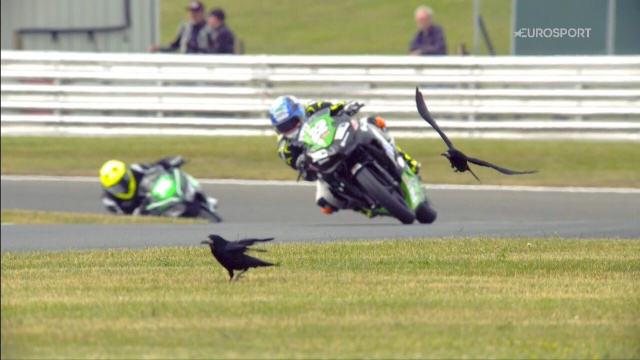
FUJIFILM Sonosite is delighted to have recently become an Official Supplier of the Bennetts British Superbike Championship (BSB) 2018, providing an iViz system to support the first-class care of riders and teams competing in the races. Kylee Charles, UK Marketing Manager for FUJIFILM Sonosite, had the opportunity to deliver the point-of-care ultrasound (POCUS) system in person and discuss its potential applications at the races with the medical team.
Motorsports are inherently risky, and developing an experienced medical response team is critical to delivering expert care and mitigating the effects of injuries as much as possible. Medical care at BSB comes under the remit of Dr Heike Romer, Chief Medical Officer for the championship, who showed me around the medical centre and discussed the potential of ultrasound to support fast and accurate triage of patients.
The BSB medical team – consisting of up to 20 paramedics and doctors – runs a tight ship. Medical posts are spread around the circuit, with rapid response vehicles located strategically to provide fast on-track support. The team’s immediate priority after an incident is to stabilise the patient at the trackside, before transferring them to the medical centre as quickly as possible for further triage and treatment. And this is where POCUS comes into play.
The medical centre is so close to the scene of an accident that there is no need to take the iViz trackside, as the patient is normally transferred to the medical centre in less time than it would take for an ambulance to attend a traffic accident on public roads. One of the straightforward and time-critical applications of POCUS is to provide an early warning of a pneumothorax before clinical signs develop, determining whether a patient should be transferred to hospital and saving precious, potentially life-saving, seconds. On the rare occasion that the medical team must treat a rider with multiple injuries, ultrasound can also be used to carry out FAST scanning and identify internal injuries – such as cardiac tamponades – helping to accurately triage and prioritise the patient’s injuries. This racing season, the medical team are also considering the potential for ultrasound to guide femoral nerve blocks to make transportation to the hospital more comfortable for a patient with a broken leg.
One of the medical team’s key aims is to minimise any burden on the NHS by pre-empting what would be done in A&E and communicating ahead with the receiving hospital, which enables the patient transfer to go smoothly. The ambulance and NHS service are already stretched, so the more that the medical team can do for the health service and riders, the better. The iViz will support improved triage and allow the medical team to make best use of its time, increasing speed and efficiency when it comes to setting up pre-treatment and, ultimately, making the whole process more straightforward. Faster diagnostics will also help to provide family and friends with information on the patient’s wellbeing sooner.
The exciting opportunity to partner with BSB was too good to pass up, and it’s been great to provide some training support to get the medical team up and running with the iViz system. Dr Heike Romer said “I have not seen such a nice, tidy, neat machine before. I’m very impressed.” If you’re interested in BSB as a sport, be sure to check out the video that we will be filming in June at the Snetterton 300 track. We look forward to catching up with the team and hearing first-hand feedback on the benefits of POCUS and using the iViz. Watch this space.

